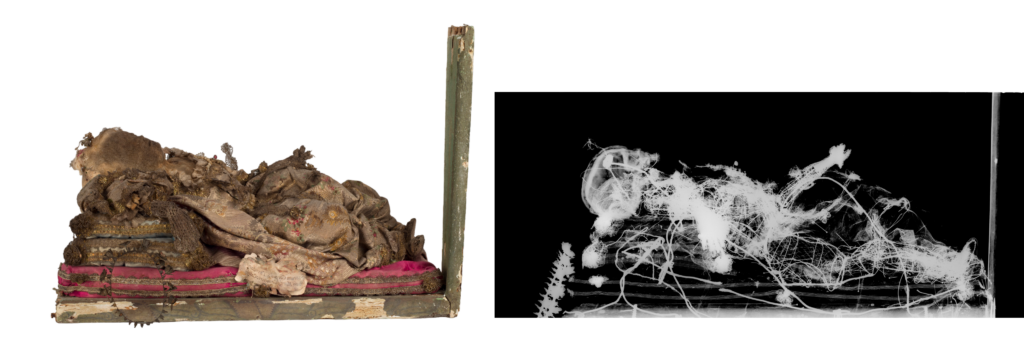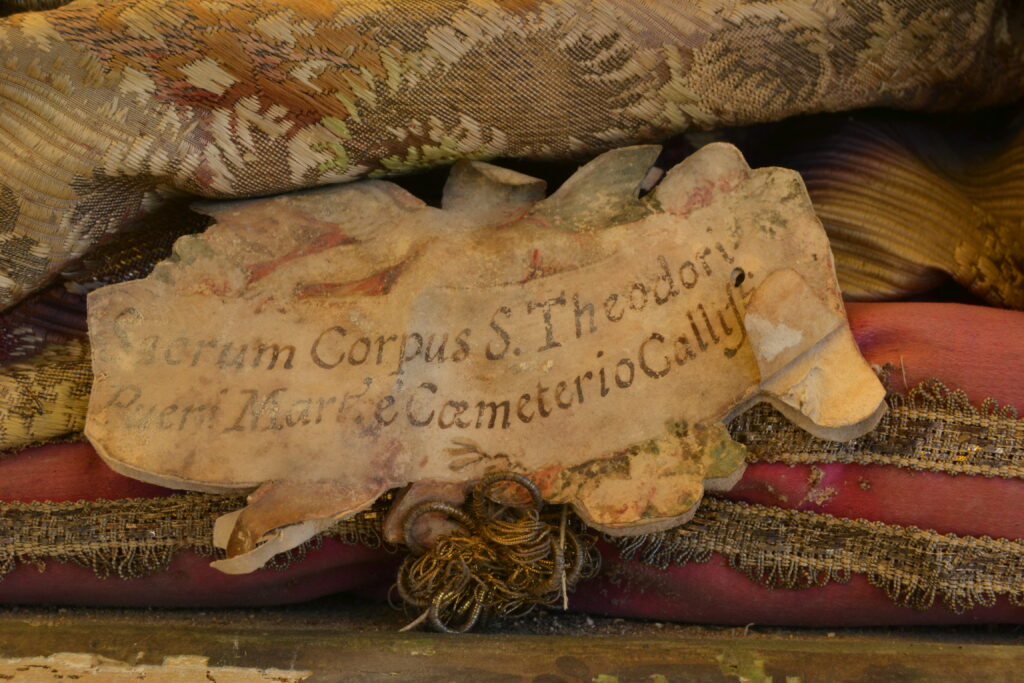St Teodoro
The face and head of St Teodoro, though fragile, remains structurally intact and easily recognisable. The body rests gently, slightly tilted to the right, on a soft pillow. An X-ray image reveals a metal structure linking and supporting the bones, encased in a fine metal net that helps maintain the body’s shape. Additionally, wires secure the bones and vertebrae, extending from the sacrum.
Notably, the length of the right ulna (approximately 7cm) indicates this individual died at approximately six months of age. It appears that the mandible does not belong to the same individual as the maxilla; the development of the upper teeth suggests an age at death between 4.5 and 7.5 months, while the lower teeth indicate an age of approximately 2.5 years.
The facial structure features three layers of silk gauze on the outermost surface followed by a middle layer of cotton fibres to add volume and texture, with the cranium serving as the base.
St Teodoro’s assembly reflects anatomical precision and rigorous craftsmanship.

The figured fabrics of this artefact feature a flowing, meandering structure defined by sinuous vertical lines—parallel or opposing—that dictate the design, whether floral, plumage, lace, or galloons. These elements reflect the tastes and fashions of 18th-century French textile craftsmanship.


The urn of St Teodoro contained a paper cartouche inscribed with the Latin phrase
“Sacrum Corpus S. Theodori Pueri Mart. e Coemeterio Callisti”

